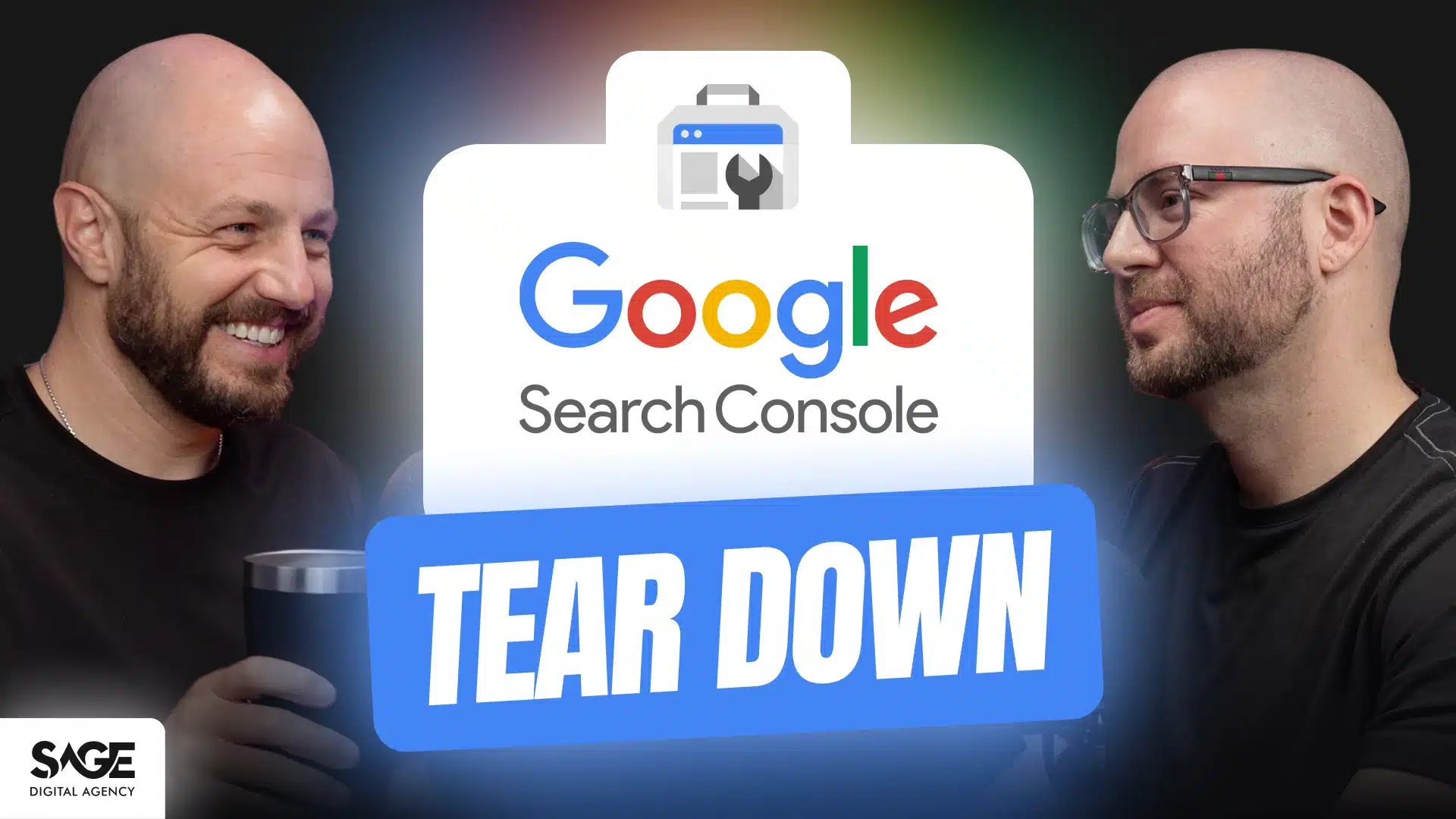SEO Not Working? Find Out Why
The search engine optimization industry has a dirty secret: most businesses are throwing money at ineffective strategies while their SEO agencies smile all the way to the bank.
After years of analyzing SEO campaigns and Google Search Console data, I’ve seen the same patterns repeat over and over again.
Companies spend thousands of dollars monthly on SEO services that deliver vanity metrics instead of business results, while their agencies hide behind technical jargon and promises of “long-term growth.”
This isn’t just a minor industry problem—it’s a systemic issue that collectively costs businesses millions of dollars annually. The worst part? Most business owners are unaware that they’re being taken for a ride because they don’t know what questions to ask or what metrics truly matter.
The SEO Industry’s Credibility Crisis
The SEO industry has cultivated a reputation for overpromising and underdelivering, and frankly, it’s well-deserved.
Walk into any digital marketing conference or browse LinkedIn, and you’ll find countless agencies promising to “skyrocket your rankings” or “double your organic traffic in 90 days.” These bold claims sound impressive, but they rarely translate into meaningful business outcomes.
The Problem with How Success is Measured
The fundamental problem lies in how SEO success is measured and communicated. Most agencies focus on metrics that sound impressive but have little correlation with actual business value. They’ll proudly report that your website now ranks for 500 more keywords than last month, or that your impressions have increased by 200%.
These numbers make for great monthly reports, but they often mask the reality that your business isn’t seeing any additional revenue from these supposed improvements.
Moving the Goalposts
This disconnect between SEO metrics and business results has created an industry where agencies can appear successful while their clients see no tangible return on investment.
It’s a classic case of moving the goalposts—instead of focusing on what actually drives business growth, the industry has collectively agreed to measure success using metrics that are easy to manipulate but difficult to connect to bottom-line results.
The Vanity Metrics Trap
Vanity metrics in SEO are like fool’s gold. They look valuable on the surface but provide little real worth. The most common offenders include keyword rankings, impressions, and overall traffic volume. These metrics have become the standard currency of SEO reporting, but they’re fundamentally flawed indicators of success.
The Keyword Rankings Deception
Consider the metric of “ranking for more keywords.” An agency might boast that they’ve increased your keyword rankings from 1,000 to 3,000 terms.
This sounds impressive until you realize that many of these new rankings might be for completely irrelevant terms, long-tail keywords with zero search volume, or phrases that your target audience would never actually search for. Ranking #1 for “best widget for underwater basket weaving” won’t help your business if you sell accounting software.
The Impressions Illusion
Impressions present a similar problem. An agency might report that your impressions have increased from 10,000 to 50,000 per month, creating the illusion of massive growth. However, impressions don’t tell you whether people are actually clicking through to your website, whether they’re finding what they’re looking for, or whether they’re converting into customers.
High impressions with low click-through rates often indicate that your content is appearing for searches where it’s not truly relevant or valuable.
The Traffic Volume Trap
The traffic volume trap is perhaps the most insidious because it seems directly connected to business value. More traffic should mean more customers, right? Not necessarily. Traffic quality matters far more than quantity.
A thousand visitors from your target geographic area searching for your core services are infinitely more valuable than ten thousand visitors from countries you don’t serve, searching for information you don’t provide.
The Hidden Dangers of Irrelevant Traffic
Low-quality, irrelevant traffic doesn’t just fail to provide value; it can actively harm your business in ways that many companies don’t realize.
When your website attracts visitors who aren’t genuinely interested in your products or services, you’re not just wasting server resources and skewing your analytics data. You’re also potentially damaging your advertising retargeting efforts and inflating your customer acquisition costs.
How Bad Traffic Ruins Your Ad Performance
Modern digital advertising platforms like Google Ads and Facebook Ads rely heavily on website visitor data to optimize ad targeting and bidding.
When your website is flooded with irrelevant traffic, these platforms receive mixed signals about who your ideal customer actually is. The algorithms might start showing your ads to people who superficially resemble your website visitors but have no genuine interest in your offerings.
The Enterprise Software Example
For example, if your business sells enterprise software but your website attracts significant traffic from students researching the topic for school projects, your retargeting pixels will capture data about these students.
When you run Facebook ads, the platform might start targeting more students and researchers rather than the decision-makers at companies who actually have purchasing authority and budget.
The Long-Term Damage
This pollution of your visitor data can persist for months, as most advertising platforms use 30to 180-day lookback windows when building similar audiences. The result is higher advertising costs and lower conversion rates, creating a compound negative effect that extends far beyond your SEO investment.
KPIs That Actually Drive Business Value
Moving beyond vanity metrics requires a fundamental shift in how we think about SEO success. Instead of celebrating increases in rankings or impressions, businesses should focus on metrics that directly correlate with business outcomes.
The most important of these is qualified traffic—visitors who are genuinely interested in your products or services and have the potential to become customers.
What Qualified Traffic Looks Like
Qualified traffic is characterized by several factors: geographic relevance, search intent alignment, and user behavior signals.
Visitors should be coming from locations where you actually provide services, searching for terms that directly relate to your business offerings, and exhibiting engagement behaviors that suggest genuine interest (such as longer session durations, multiple page visits, or direct navigation to key conversion pages).
Conversions: The Ultimate Measure
Conversions represent the ultimate measure of SEO success, but they need to be properly defined and tracked. A conversion isn’t just any form submission or phone call—it’s a meaningful action that indicates genuine business interest. For e-commerce sites, this might be purchases or additions to a cart.
For service businesses, it could be consultation requests or demo bookings. The key is ensuring that your conversion definitions align with actions that actually lead to revenue.
Revenue Per Session
Revenue per session takes this concept further by directly connecting SEO traffic to financial outcomes. This metric divides the total revenue generated from organic search traffic by the number of sessions, providing a clear picture of how much each visitor is worth to your business. A campaign that generates fewer visitors but higher revenue per session is almost always more valuable than one that drives high traffic with low commercial value.
The Branded Keywords Misconception
Branded keyword performance deserves special attention because it’s often misunderstood.
While ranking well for your brand name is important for reputation management, it’s not a strong indicator of SEO success. People searching for your brand name already know about your business—they’re not new customers discovered through SEO efforts. True SEO success comes from ranking for non-branded terms that introduce your business to people who haven’t heard of you before.
Google Search Console: Your SEO Reality Check
Google Search Console (GSC) serves as the ultimate diagnostic tool for evaluating SEO performance because it provides unfiltered data directly from Google about how your website appears in search results. Unlike third-party tools that estimate rankings and traffic, GSC shows you exactly what Google is doing with your website and how users are finding you.
Geographic Distribution Tells the Story
The geographic distribution of your traffic tells an immediate story about SEO effectiveness. If you’re a local business serving clients in specific cities or regions, but your GSC data shows significant traffic from other countries or irrelevant locations, it’s a clear sign that your SEO efforts are attracting the wrong audience.
This geographic misalignment often indicates targeting problems with your content or technical issues with your website’s location signals.
Keyword Performance Data
Keyword performance data in GSC reveals whether your content is ranking for searches that actually matter to your business. You should see a healthy mix of commercial-intent keywords (terms that indicate someone is looking to make a purchase or hire a service) and informational keywords that demonstrate expertise in your field.
If your top-performing keywords are all informational or completely unrelated to your business offerings, your SEO strategy needs immediate correction.
Search Intent Patterns
The queries report in GSC also reveals search intent patterns that can guide content strategy. Are people finding your website when they’re looking for free information, or are they searching for terms that suggest buying intent? The ratio between these query types provides insight into whether your SEO efforts are attracting potential customers or just casual browsers.
Click-Through Rates as a Quality Indicator
Click-through rates (CTR) from GSC indicate how compelling your search listings are to users. Low CTR despite good rankings suggests that your titles and meta descriptions aren’t effectively communicating your value proposition. High impressions with low CTR often indicate that your content is appearing for searches where it’s not truly relevant, even if it’s ranking well.
Red Flags: How to Spot Ineffective SEO Vendors
The most telling indicator of an SEO agency’s competence is its own organic visibility. If an agency claims to be an SEO expert but doesn’t rank for relevant keywords in its own industry, it raises serious questions about its capabilities.
This doesn’t mean they need to rank #1 for every competitive term, but they should have strong visibility for searches related to their services and expertise.
The AI-Automation Red Flag
Agencies that offer vague, AI-automated SEO solutions without significant manual involvement are particularly concerning. While automation can handle certain technical aspects of SEO, effective strategy requires human insight, creativity, and understanding of business context.
Agencies that promise to “set it and forget it” or claim their proprietary software can handle everything automatically are usually selling snake oil.
The Time Investment Reality
The time investment required for meaningful SEO results is substantial. Quality SEO work typically requires 20 to 40 hours per month for most businesses, including strategy development, content creation, technical optimization, and performance analysis.
This time investment is necessary because SEO involves complex research, creative problem-solving, and iterative testing that can’t be rushed or fully automated.
Vague Proposals and Deliverables
When evaluating SEO proposals, be wary of agencies that can’t clearly articulate their process or provide specific deliverables. Legitimate SEO work involves concrete actions like keyword research, content optimization, technical audits, and link-building outreach. If an agency’s proposal is filled with vague promises about “improving your online presence” without specific tactics, it’s a red flag.
The Transparency Test
Transparency is crucial in SEO partnerships. Reputable agencies should be willing to share their methods, provide regular detailed reports, and explain their reasoning behind strategic decisions. Agencies that are secretive about their techniques or refuse to provide access to the tools and accounts they’re using often have something to hide.
The Economics of SEO: Why Cheap Solutions Don’t Work
The economics of SEO services reveal why many businesses are disappointed with their results. A $1,000 monthly SEO contract, after accounting for agency overhead, profit margins, and administrative costs, typically translates to only 6-10 hours of actual work on your account.
This limited time investment severely constrains what can be accomplished, especially for competitive industries or comprehensive SEO strategies.
The Annual Spend Without Results
Most businesses end up spending $12,000 to $24,000 annually on SEO services without clear visibility into results or return on investment. This spending often continues for years because businesses don’t know how to evaluate SEO effectiveness or are hesitant to change vendors after making a significant time investment.
Why Low-Cost SEO Fails
The allure of low-cost SEO offers is understandable, but the reality is that meaningful SEO results require substantial investment in time and expertise.
Agencies offering comprehensive SEO services for $500-800 per month are either cutting corners somewhere (often using automated tools or offshore labor with minimal oversight), or they’re operating at a loss to acquire clients they plan to upsell later.
The Skilled Professional Factor
Quality SEO work requires skilled professionals who understand both technical optimization and business strategy. These professionals command higher salaries, which must be reflected in service pricing.
Agencies that significantly undercut market rates are usually compensated by reducing service quality, outsourcing work to less qualified providers, or spreading their attention across too many clients.
Rethinking SEO’s Role in Your Marketing Strategy
One of the biggest misconceptions about SEO is that it should be the foundation of your marketing strategy. In reality, SEO works best as the final 20% of a comprehensive marketing approach, not as the starting point. This perspective shift is crucial for setting appropriate expectations and allocating resources effectively.
The Diversification Principle
Successful businesses typically diversify their marketing investments across multiple channels, including paid advertising, email marketing, SMS marketing, social media, and content marketing. Each channel has different strengths, timelines, and risk profiles. SEO’s strength lies in its potential for long-term, sustainable growth, but it also comes with inherent unpredictability and delayed results.
Paid Advertising as Foundation
Paid advertising, by contrast, offers more immediate and predictable returns. You can launch a Google Ads campaign and start seeing results within days, with clear metrics about cost per acquisition and return on ad spend. This predictability makes paid advertising an excellent foundation for growth, with SEO serving as a complementary channel that builds long-term value.
The Timeline Reality
The timeline difference between paid advertising and SEO is significant. While ad campaigns can generate immediate traffic and conversions, SEO typically requires 6-12 months to show meaningful results, and full maturation can take 18-24 months. This timeline makes SEO unsuitable as a primary growth driver for businesses that need quick results or are operating with limited cash flow.
Common Pitfalls and How to Avoid Them
The lack of clear deliverables and KPIs is perhaps the most common issue in SEO engagements. Many businesses enter into SEO contracts without clearly defined success metrics or specific deliverables. This ambiguity benefits agencies because it makes it difficult to measure performance objectively, but it leaves businesses vulnerable to paying for ineffective services.
The Link Building Obsession
Over-reliance on link building represents another significant pitfall. While links remain an important ranking factor, many agencies focus disproportionately on link acquisition because it’s easier to report on than more nuanced factors like content quality and user experience. Businesses often pay for extensive link building campaigns without understanding whether these links are actually moving the needle on their rankings or traffic.
The Outsourcing Problem
The outsourcing of SEO tactics without transparency creates additional risks. Many agencies subcontract various aspects of SEO work to freelancers or overseas providers, which isn’t inherently problematic if properly managed. However, businesses should understand who is actually working on their account and what quality controls are in place.
The Communication Gap
Perhaps the most concerning pitfall is that many businesses paying for SEO services can’t articulate what they’re getting in return or what success looks like. This lack of clarity indicates poor communication from the agency and insufficient involvement from the business owner. Effective SEO requires collaboration between the agency and the business, with regular communication about goals, challenges, and results.
The Path Forward: Redirecting Your SEO Investment
The goal isn’t to abandon SEO entirely, but to approach it with realistic expectations and proper measurement. Businesses should start by conducting an honest assessment of their current SEO investment and results. This assessment should include reviewing Google Search Console data, analyzing traffic quality and conversion rates, and calculating the actual return on investment from SEO activities.
The GSC Audit Revelation
For businesses currently working with SEO agencies, requesting a comprehensive audit of your Google Search Console data can reveal surprising insights. Most websites, even those spending $500-$4,000 monthly on SEO, have significant issues that are easily identifiable through GSC analysis. These issues might include traffic from irrelevant countries, rankings for non-commercial keywords, or technical problems that are preventing proper indexing.
Budget Reallocation Strategy
The next step involves redirecting budget toward activities with measurable ROI. This might mean reallocating some SEO budget toward paid advertising, email marketing, or other channels that provide more immediate and predictable returns. It doesn’t necessarily mean eliminating SEO entirely, but rather ensuring that SEO investment is proportional to its actual contribution to business growth.
Timing Your SEO Investment
Businesses should also consider the timing of their SEO investment. Companies in early growth phases or those operating in highly competitive markets might be better served by focusing on paid advertising and other performance marketing channels initially, then adding SEO as a long-term growth strategy once they have more predictable revenue streams.
Building a Sustainable SEO Strategy
When done correctly, SEO can provide tremendous long-term value for businesses. The key is approaching it with realistic expectations, proper measurement, and integration with other marketing channels. A sustainable SEO strategy focuses on creating genuinely valuable content for your target audience, optimizing for relevant keywords that align with business goals, and building authority through expertise and trustworthiness.
The Ongoing Investment Requirement
Effective SEO also requires ongoing investment in understanding your audience and market. This means regular keyword research to identify new opportunities, competitor analysis to understand industry trends, and content strategy development that addresses the questions and concerns of your potential customers. These activities require significant time and expertise, which is why quality SEO services command appropriate pricing.
The Compound Effect
The businesses that succeed with SEO are those that view it as a long-term investment rather than a quick fix. They understand that SEO results compound over time, with each piece of quality content and each technical improvement building on previous efforts. This compounding effect can create significant competitive advantages, but only for businesses that are willing to invest consistently over extended periods.
Taking Action: Your Next Steps
The first step in optimizing your SEO investment is gaining visibility into your current performance. This means diving deep into your Google Search Console data, analyzing your traffic sources and conversion patterns, and honestly assessing whether your current SEO efforts are delivering business value.
Evaluating Your Current Agency
If you’re currently working with an SEO agency, request a detailed breakdown of their activities and results. Ask for specific examples of how their work has improved your business outcomes, not just your rankings or traffic. If they can’t provide clear examples of business impact, it may be time to reconsider your investment.
Setting Clear Goals
For businesses considering SEO services, start by clearly defining your goals and success metrics. What does success look like for your business? How will you measure whether SEO is providing value? These questions should be answered before you start evaluating agencies or making investments.
The Balanced Approach
Remember that SEO is just one piece of your marketing puzzle. The most successful businesses are those that maintain a diversified marketing approach, with SEO serving as one component of a comprehensive strategy rather than the entire foundation. By keeping SEO in proper perspective and measuring it against realistic expectations, you can make informed decisions about how to allocate your marketing budget for maximum impact.
Driving Industry Change
The SEO industry needs businesses to demand better results and clearer accountability. By focusing on metrics that actually matter and insisting on transparency from service providers, you can help drive positive change in the industry while protecting your own business interests. The goal isn’t to eliminate SEO from your marketing mix, but to ensure that your investment is generating real returns and contributing to your business growth in measurable ways.





